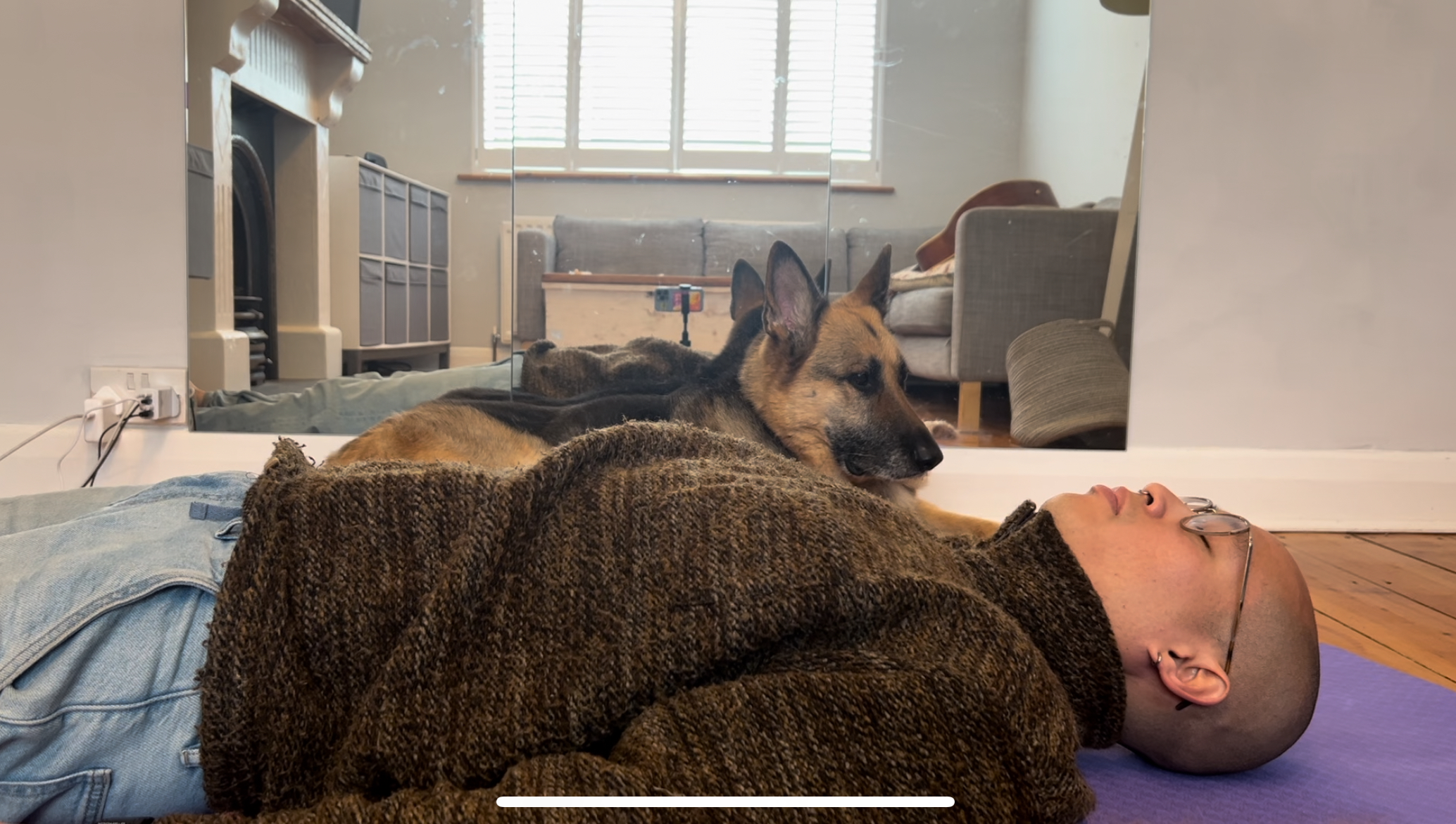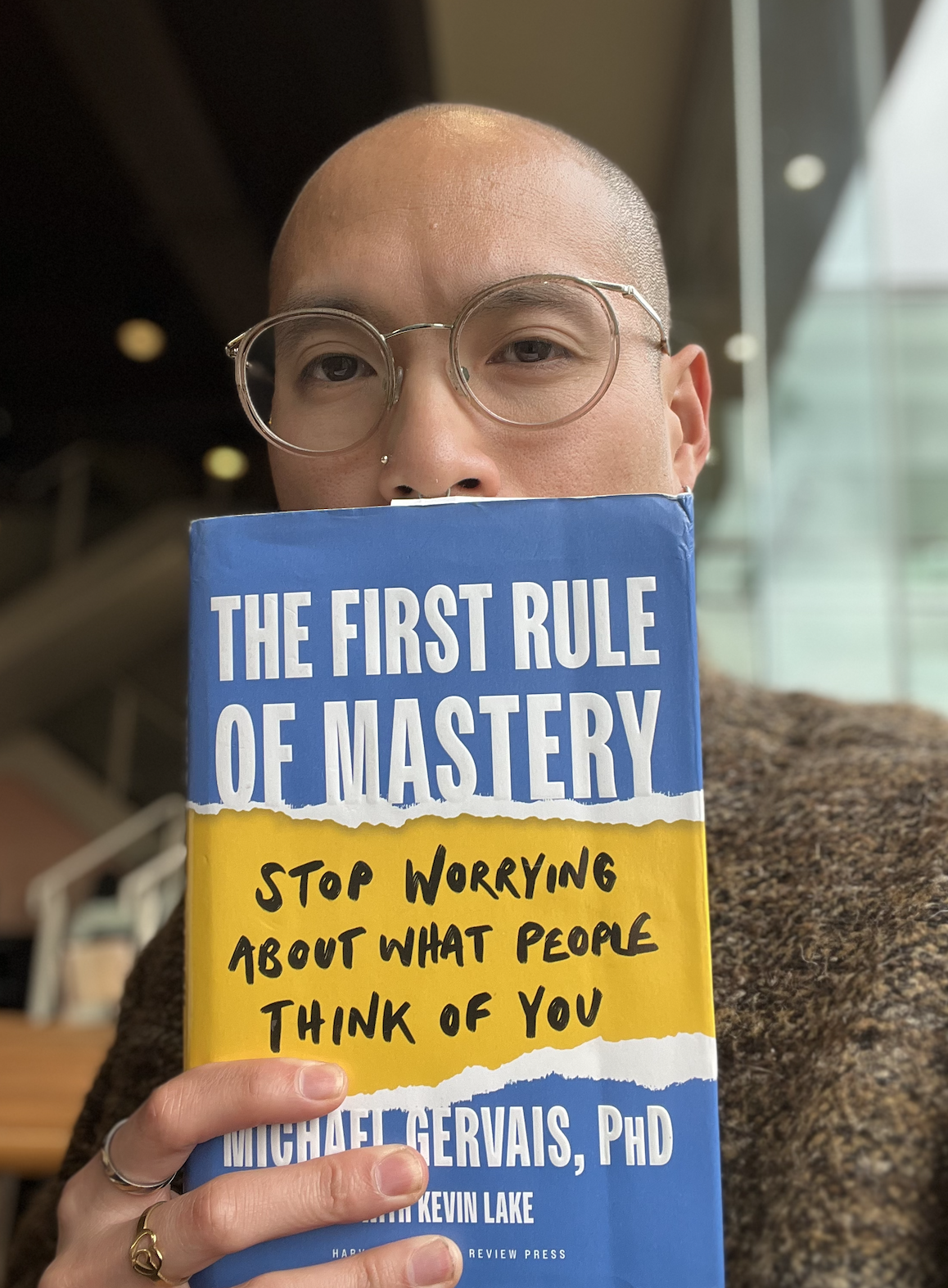I often do not finish reading books that I started. And generally speaking, while I do value completing what I start, I also practice self-compassion and most recently in adult life, deliberately and mindfully moving away from the behavior of “forcing” (or tricking) myself to do things that I don’t feel compelled to do. Fortunately, I’m in good company and many others are like me; in fact, today there was a post published on Hacker News thread titled “It’s okay to abandon things”.
Anyways, the book that I’m actively reading — in between reading “Sports Psyching: Playing your best game of all time” – is titled: “The first rule of mastery: Stop worrying about what other people think” by Michael Gervais
I’m continuing to become more and more aware of my own thoughts, feelings, beliefs, and values. One attribute of mine that I’m currently VERY curious about is my high degree of acceptance:
the desire to increase acceptance from others and reduce criticism or rejection.
This topic fascinates me because I feel — deep in my bones — that I can live more authentically and reach my full potential (to be determined) if I spend less time worrying about what others think of me. Looking back, for much of my life, despite obtaining what some would consider external markers of success — working at a top tech company (AWS), receiving an inventor’s patent (in software networking, purchasing my first house in my mid twenties — I’ve limited myself spiritually.
Again, I’m becoming more and more aware of my propensity to check in with what others think before arriving at a decision for myself. Though I value independence and reaching conclusions on my own, I sometimes over-index and over-value what others people think …. of me.
For example, before I had my septum pierced, I posted a poll on Instagram, asking people what they thought was more aesthetic: nose piercing or septum piercing.
Though that activity was fun, in retrospect, I would’ve liked for myself to make the decision regardless of the poll results. I would’ve been particularly proud if people responded negatively and I proceeded in spite of the criticisms.
In a similar situation, just two weeks ago, I pierced my nostril. But this time: no polls. No social media posts. It’s not that I’m ashamed or embarrassed by the piercing. Not in the least. This time around, though from the outside the behavior looks the same, I arrived at the decision completely on my own.
This second facial piercing of mine feels different internally, in my mind, in my thoughts, in my body.
I wasn’t anxious … wasn’t worrying about what other folks thought of how I would be perceived. Caring less might be a consequence of the fact that it’s easier to do something a second time however I’d like to think that part of my recent cultivation of understanding who I am played a role.
And now, I want to continuing building psychological tools and mental fortitude and practices and rituals that will help address the anxiousness caused by an excessive preoccupation of what other people think.
How I stumbled on “The first rule of mastery” book
I love learning everything and anything about self-development. And one podcast where self-development tends to be main focus is Rich Roll’s podcast. On the podcast, he typically brings on “famous” guests who demonstrate excellence in their field.
Sometimes the guests are academics.
Sometimes actors.
Sometimes athletes.
The common theme though is that they tend to be “high performers.”
And while walking the dogs at the park a couple weeks ago, I chose a random podcast episode where Michael Gervais was the guest. The dialog between the two of them really resonated with me but the main takeaway from that episode was that high performance tends to be hindered by fear of other people’s opinion (FOPO).
As humans, we value social acceptance and try to reduce rejection. It’s an evolutionary trait that kept us alive in our tribes. However, the argument is that that sensitivity for acceptance has become maladaptive in today’s society.
I learned that I have a high degree of acceptance after being evaluated by a Reiss Motivational Profile Master (fun fact: I am now also certified): I am about two standard deviations away from the norm in terms of how much I “care” about what others think of me.
In this post, I won’t go too deep into behaviors driven by high acceptance but for now, let’s just say there’s a price to pay when how we behave or present ourselves in a ways to garner social acceptance.
Favorite quotes from the book far
I’m about 1/3 of the way through the book but I wanted to pause, reflect, and share some of my favorite quotes I collected from the book.
“Everything that irritates us about others can lead us to an understanding of ourselves” (pg. 1)
“Now, I had more positive opinions than negative; however, I found the negative opinions to be way more magnetic. They held more weight at the time. Being stuck on those negative words, as I see it now, reminds me of one o my favorite quotes. ‘One tree can make one thousand matches. And one match can burn one thousand trees.’ (pg. 3)
“The sooner you fundamentally change your relationship with other people’s opinions, the sooner you become free. Totally free to be at home with yourself wherever you are.” (pg. 5)
“Developing an awareness of our fears about the opinions of others is the first step to discharge the power they hold over us. Awareness as the starting point for change is not a novel idea…But awareness is only the first step. Awareness must be accompanied by psychological skill building.” (pg. 12)
“We externalize our self-esteem, our sense of value. We see ourselves through the eyes of others. We look outside of ourselves to determine how we feel about ourselves.” (pg. 36)
“They are less focused on the experience and instead perseverate on how the other person may or may not feel about them. In that interaction, the problem they are trying to solve is approval or rejection as opposed to the shared social experience.”
“Care about what people think and you will always be their prisoner”

